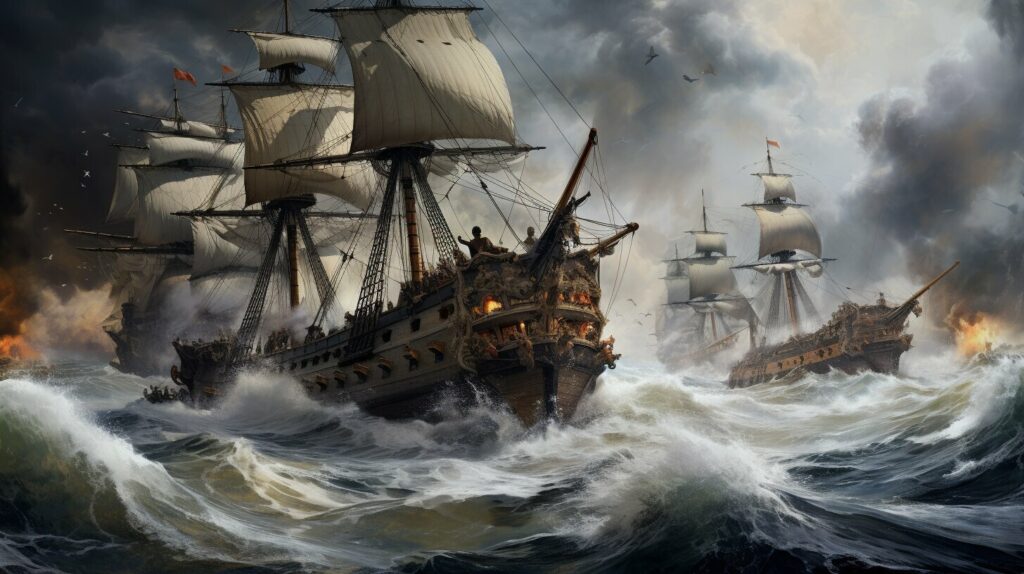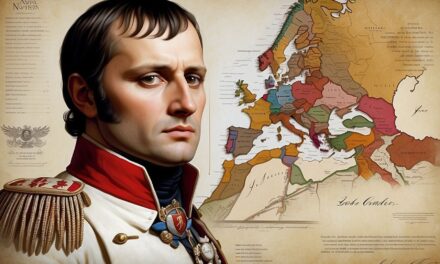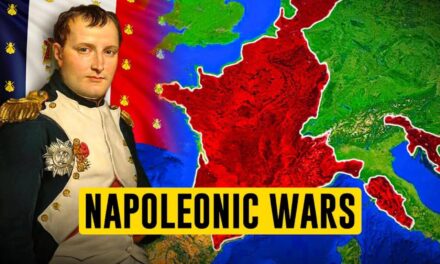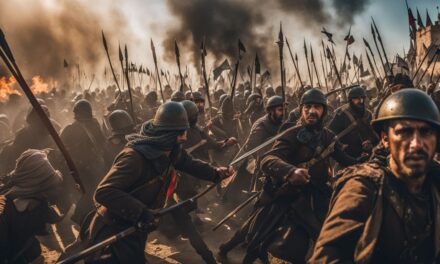The early 16th century saw a pivotal power struggle unfold in the Indian Ocean region over the lucrative spice trade routes between Asia and Europe. The rising Portuguese Empire sought to wrest control of this trade from the established Muslim powers who had long monopolized the traditional passageways through the Red Sea and Persian Gulf.
This led to a fateful naval showdown in 1509 off the Indian port city of Diu, where a Portuguese armada engaged a combined fleet of the Gujarat Sultanate, Mamluk Sultanate of Egypt, Zamorin of Calicut, and other allies. The Portuguese would score a decisive victory in this Battle of Diu, breaking the military might of the Muslim alliance. This triumph paved the way for Portugal to dominate the all-important spice trade and the wider Indian Ocean region. Diu would be known as being one of the battles that changed the world for over a century after.
The clash was a memorable one, matching two distinct styles of naval warfare in a contest for supremacy. Diu was a naval battle that marked the dawn of European dominance in Asian waters, as Portuguese cannons and caravels prevailed over the traditional forces of the Ottoman Empire and other regional Muslim powers.
Key Takeaways
- The Battle of Diu was fought in 1509 between the Portuguese Empire and a Muslim coalition trying to stop Portuguese expansion in the Indian Ocean
- Control of the lucrative spice trade between Asia and Europe was the main motivation behind the naval clash
- The Portuguese decisively defeated the combined fleet of the Gujarat Sultanate, Mamluk Egyptians, Zamorin of Calicut, and Ottoman allies
- Victory allowed Portugal to quickly gain control of ports that were key and dominate Indian Ocean trade for over a century
- The battle marked the beginnings of European naval dominance in Asia, ending Muslim monopoly over traditional trade routes
The Backdrop of the Battle of Diu

Diu Fort, built in 1535, played a crucial role in the defense and control of the region.
The Arrival of the Portuguese in India
The stage was set for this naval showdown by the pioneering voyage of Vasco da Gama, who became the first European to reach India by sea when he arrived on the coast of Calicut in 1498. Da Gama landed with a small fleet on behalf of the Portuguese crown, which had spent decades trying to find a direct maritime route to the lucrative spice markets of Asia.
The Portuguese aimed to break the stranglehold Arab traders had over the spice trade through controlling the traditional passageways through the Red Sea and Persian Gulf. Cutting out these Muslim middlemen by sailing around Africa to India would allow Portugal to reap huge profits from the spice trade.
| Key Players | Role |
|---|---|
| Vasco da Gama | First European to reach India via the Cape of Good Hope, opening up new trade routes. |
| Muslim Merchants | Controlled the established trade network in the Indian Ocean, resistant to European encroachment. |
| Hindu Monarchs | Sought to maintain control over the region and protect their trade interests. |
| Zamorin of Calicut | A key player in the region, opposed Portuguese encroachment and sought to maintain his trade network. |
However, Da Gama received a hostile reception from the native rulers along India's Malabar Coast. The local Arab merchant elite saw the Portuguese as a threat to their livelihoods. The Zamorin (Samoothiri ruler) of Calicut attacked the Portuguese factory in 1500, foiling Portugal's aims of establishing friendly ties and trade relations in the region.
Growing Tensions with Local Powers
Rebuffed at Calicut, the Portuguese found an ally in the Raja of Cochin, a vassal of the Zamorin. This alliance provided Portugal with a local power base, but also stirred tensions with Calicut. Skirmishes broke out between Portuguese ships and Calicut's forces.
In 1504, the Zamorin attacked his rebellious vassal to punish the Raja of Cochin for realigning with the Portuguese. The Portuguese struck back fiercely, devastating Calicut's lands and crippling the city's spice trade. It was becoming clear that the Portuguese would need force of arms to accomplish their aims in India.
Back in Portugal, King Manuel I appointed experienced commander Francisco de Almeida as the first Viceroy of India in 1505. With a heavily armed fleet, Almeida was tasked with securing Portuguese trading posts in India and countering the Arab Muslim fleets that dominated regional waters.
Did You Know: The Battle of Diu is mentioned in the epic poem The Lusiads by Luís de Camões, which is considered to be Portugal's national epic. In the poem, Camões describes the battle in vivid detail, and he praises the courage and skill of the Portuguese sailors.
The Portuguese-Cochin Alliance
However, Calicut refused to acquiesce to Portuguese power. The Zamorin ruler continued resisting this formidable newcomer that threatened the Muslim stranglehold over the spice trade. He turned to the powerful Mamluk Sultanate of Egypt based in Cairo for urgent help against the Portuguese forces.
The Mamluks controlled the traditional spice trade routes through the Red Sea between India and Egypt. Portuguese expansion in the Indian Ocean endangered Mamluk revenues and influence. As such, Egypt was drawn into the fray against the Portuguese in India.
The Republic of Venice was also pulled into this conflict by proxy, having been displaced by the Portuguese in the European spice market. Once Portugal opened up direct maritime trade with India, the Venetian merchants could no longer maintain their monopoly over the spice trade in Europe.
An alliance of shared interests took shape between Venice, the Mamluks, the Zamorin of Calicut, and other regional powers that aimed to check Portuguese ambitions in the Indian Ocean region through force.
The Opposing Sides at the Battle of Diu

The Portuguese Empire Seeks Control
By 1508, the Portuguese decided to bring the full force of their naval power to bear upon the coastal city of Diu, an important Gujarati port at the mouth of the Gulf of Khambhat. From here, the Gujarat Sultanate and its appointed governor Malik Ayyaz conducted extensive trade with Egypt, Venice, and other kingdoms.
The Portuguese Viceroy Francisco de Almeida was dispatched to patrol the western Indian coast with a fleet of twenty ships. After stopping at Cannanore and other ports en route, this fleet bombarded and destroyed the Gujarati port of Dabul in retaliation for perceived aid to Calicut's forces.
This aggressive posture was intended to project Portuguese naval supremacy along the coast. However, it further antagonized the regional powers now arrayed against Portugal. The stage was set for a major naval clash near Diu between the two sides.
The Mamluks, Ottomans, and Other Powers Allied Against the Portuguese
To counter the Portuguese, the Zamorin's envoys succeeded in persuading the Mamluk Sultan Al-Ashraf Qansuh al-Ghawri to send a grand naval expedition against this common threat. As the Mamluks had little naval warfare experience, they relied on getting ships, crews, and technical aid from the Venetians who were eager to thwart Portuguese expansion.
The Ottomans also offered active support to the Mamluks, providing ships and Janissary troops. Some royal galleys of the Sultanate of Gujarat joined this anti-Portuguese alliance as well. Between late 1507 and 1508, a sizable armed fleet assembled at the Mamluk port of Suez and set sail for Diu under the Mamluk Admiral Amir Husain Al-Kurdi.
This coalition fleet of over 90 ships carrying about 6,000 armed men was a formidable force on paper. But the Portuguese had key advantages in naval armaments and warfare experience using cannons and sailing ships that would prove decisive.
The Battle Itself - A Decisive Naval Contest

The Portuguese Fleet Versus the Muslim Alliance Fleet
On February 3, 1509, the rival fleets edged for position off the Arabian Sea port of Diu.
The Portuguese could field about 18 ships and 1,000 men under the command of Viceroy Francisco de Almeida, who was bent on avenging the recent killing of his son during a skirmish with this Muslim fleet. Though outnumbered, the Portuguese had more heavy cannon and experienced seamen and naval gunners.
The Portuguese deployed large carrack-style sailing ships, including the massive Flor do Mar flagship capable of carrying over 600 men, which would be comparable in size to a modern cruise liner like Royal Caribbean's Symphony of the Seas.
The Muslim coalition's assembled fleet consisted of about 6 Ottoman and Mamluk carracks, 30 Gujarati and Calicut galleys, 50 small fighting ships, and 10 other support vessels. They planned to utilize Diu's harbor and shore defenses rather than face the Portuguese at sea.
The Battle Strategy and Progression
As the Portuguese fleet approached Diu, the Muslims remained sheltered in the port. Portuguese cannons soon opened up a heavy bombardment targeting the densely clustered enemy ships and shore positions.
With more heavy guns and seasoned crews, the Portuguese ships were able to spray the low-lying galleys of the Muslim fleet with cannon fire and small arms with little risk of being boarded in return. The Portuguese captains skillfully maneuvered their ships while maintaining concentrated volleys.
A fierce naval battle was fought as Portuguese raiding parties boarded and overwhelmed several enemy vessels after grappling them. Though the Muslim fleet bravely stood their ground for hours, their inferior ships and weapons were unable to counter the Portuguese onslaught.
By sunset, the coalition fleet was battered and its defenses shattered by the Portuguese naval artillery barrage and boarding attacks. Only a handful of vessels managed to escape under the cover of darkness in full retreat. It was a decisive naval victory for the Portuguese.
Portugal's Decisive Victory at Sea
When the smoke cleared, over 1,000 Muslim sailors and marines lay dead or wounded. The Portuguese lost only about 30 men against adversary odds. They took possession of several enemy ships as prizes of war.
The table below provides a comprehensive summary of the key events and outcomes of the Battle of Diu:
| Event | Impact |
|---|---|
| Portuguese fleet engages coalition fleet near Diu harbor | The battle commences with Portuguese artillery bombardment |
| Coalition fleet struggles to counter Portuguese naval tactics | Portuguese ships demonstrate superior firepower and seafaring skills |
| Portuguese carracks and caravels overpower smaller coalition vessels | Coalition ships are captured or destroyed |
| Portuguese achieve a resounding victory | Minimal losses on Portuguese side, significant losses for the coalition |
This momentous triumph against a numerically superior alliance of adversaries gained Portugal complete maritime command over the seas off Diu and the Arabia Sea region. The Muslim powers with their vulnerable galleys proved no match for European-style sailing ships armed with heavy cannons.
The Battle of Diu severely crippled the naval strength of the Mamluks, Gujarat Sultanate, and Calicut's forces. Portugal was now poised to make deep inroads into the Indian Ocean trading zone.
The Aftermath and Historical Importance

Portugal's Ascendancy in the Indian Ocean Region
In the years immediately after their landmark victory at Diu, the Portuguese rapidly gained control over many strategically vital ports and trading hubs across the Indian Ocean region.
Goa was captured in 1510 to become the center of Portuguese India for centuries. Other Portuguese strongholds included Cochin, Cannanore, Quilon, Bombay, Chaul, and Cranganore on the Malabar Coast. Ceylon (Sri Lanka), Malacca, and Ormuz were also subdued within just a few years of Diu.
This allowed Portugal to completely control the traditional maritime spice trade routes between India and the Red Sea, ending the monopoly of the Arabs and Venetians. All trade between Asia and Europe would now be channeled through the Cape of Good Hope passage pioneered by Portugal.
The Decline of Mamluk and Gujarati Naval Power
The disastrous defeat at Diu broke the naval might and maritime influence of powers like the Mamluks and Gujarat Sultanate. The Mamluk Sultanate collapsed in 1517 when the Ottoman Empire absorbed Egypt. Gujarat's prosperity was severely affected after losing control over the lucrative spice trade.
Portugal was now the dominant naval force in the Indian Ocean. The Muslim powers and traditional spice trade centers like Egypt, Arabia, and Venice were the biggest losers from Portugal's meteoric rise.
The Dawn of European Dominance in Asia
The Battle of Diu had far-reaching consequences. It marked the arrival of modern European naval strength and firepower in Asian waters. The Age of Discovery brought European, specifically Portuguese, dominance over the Indian Ocean and key Asian trade routes for the first time, ending the centuries-old Muslim stranglehold.
This victory was the first step in establishing complete European control over Asian trade that would last until the decline of their maritime empires in the late 18th century. The Battle of Diu is rightly remembered as a turning point that heralded the dawn of European ascent in Asia.
Frequently Asked Questions About the Battle of Diu
Q: Where was the Battle of Diu fought?
A: The Battle of Diu took place in the Arabian Sea near the port city of Diu in western India, which was an important trading center under the Gujarat Sultanate at that time.
Q: When did the Battle of Diu occur?
A: The pivotal naval battle between the Portuguese and the Muslim alliance fleet took place on February 3, 1509.
Q: What sparked the Battle of Diu?
A: Control over the lucrative maritime spice trade between India and Europe was the main cause behind this pivotal clash. The Portuguese sought to break the Arab monopoly, which led to tensions with local powers like the Zamorin of Calicut and the Sultanate of Gujarat.
Q: Who emerged victorious in the Battle of Diu?
A: The Portuguese fleet decisively defeated the larger combined fleet of the Mamluk Sultanate, Gujarat, Calicut, and Ottoman allies in this naval encounter.
Q: How did the Portuguese manage to win despite being outnumbered?
A: Though numerically inferior, the Portuguese had a key advantage in terms of naval strategy, firepower, and experienced crews. Their ships were armed with more heavy cannons and they used naval artillery and boarding tactics very effectively against the vulnerable Muslim galleys.
Q: What was the long-term impact of Portugal's victory?
A: The win allowed Portugal to quickly gain control over key Indian Ocean ports and dominate the regional maritime spice trade for over a century until other European powers like the Dutch and British arrived.
Q: Why is the Battle of Diu considered so historically significant?
A: It marked the arrival of European naval strength in Asian waters and the beginning of the end of Muslim trade dominance in the region. In many ways, it ushered in the era of European colonialism in Asia.
Q: When was the crucial Battle of Diu fought that changed the course of world naval history?
A: The Battle of Diu was a pivotal naval battle fought on 3 February 1509 between the fleets of the Portuguese Empire and a joint fleet of the Sultan of Gujarat, the Zamorin of Calicut with support of the Republic of Venice and the Ottoman Empire. This naval battle in the Arabian Sea marked the beginning of European dominance over Asian seas that would last for centuries.
Q: How did the Portuguese victory at the Battle of Diu help them control key ports in the Indian Ocean region?
A: The decisive Portuguese victory against the great Muslim alliance at the Battle of Diu eased their strategy of controlling the Indian Ocean to route trade around Africa. After this naval battle, Portugal rapidly captured several key ports in the Indian Ocean including Goa, Ceylon, Malacca, and Ormuz. This allowed the Portuguese to dominate trade and assert power in the region for over a century until other European powers challenged them.











